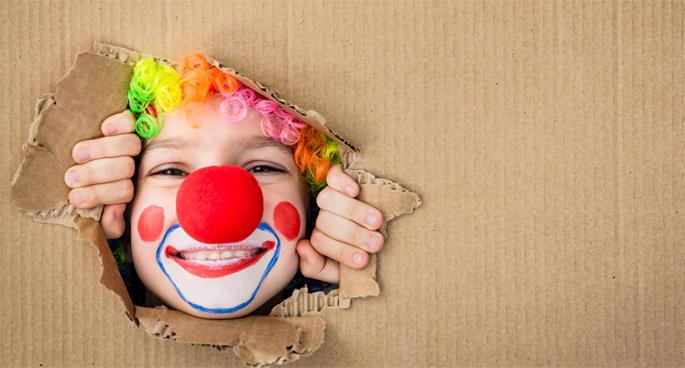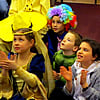There’s a misconception out there that Purim is the Jewish equivalent of a strange practice of Celtic, pagan origins known as Halloween. It's a fallacy that can prove embarrassing if you're invited to a Purim costume party and turn up as a werewolf or a headless man.
So what is the difference?
Well, superficially, a dolphin could be misconstrued as a kind of shark—until you dive in and swim with them. So let’s dive into Purim and see if anything lines up.
Purim celebrates a great victory for minority rights in the ancient Persian kingdom—a story very relevant to this day. Communities gather and the story is read from a Hebrew scroll.
Purim is a day of giving. Families go door to door delivering packages of food and goodies to neighbors and friends. Collections are made for the needy, like to help old man Joe pay his rent, a single mother to fill her fridge, a family in Israel to pay their medical bills.
And whoever we can invite, we pull into our Purim feast, celebrating together with songs and multigenerational entertainment.
Purim is dedicated to making others happy. Children and adults dress up as clowns and bring laughter. They visit retirement homes, hospitals, and even prisons, to bring joy to the loneliest places.
They also dress up as the heroes and heroines of the Purim story. Young girls often dress as a brave young woman, Esther, who became the empress of the largest empire on earth, yet never forgot her heritage and her people, and risked her life to save them. Young boys often dress as the great sage, Mordechai, who proudly refused to bow to a megalomaniac bigot.
As you can see, not much is lining up. On the contrary, there are some polar opposites: Giving in the place of getting, cheering in the place of scaring.
Purim tells a story of the victory of life. Halloween contains an awful lot of the opposite.
Halloween is sometimes rationalized as a time for children to face their deepest anxieties and discover they can survive.
On Purim, children learn to face up to that dark, scary world as the heroes that fill it with joy and light.
All this aside, the most important difference may be quite simply that we are Jews. We have our own identity already, thank you.
We live today, by G‑d’s great kindness, in lands that not only do not force a majority culture down our throats, but openly celebrate the diversity of their citizens. Today, we all accept that there is dignity in difference, strength in diversity, and beauty in the harmony of opposites.
The people around us expect us and respect us for preserving our unique identity. Dressing up as deathly apparitions and frightful demons is not just foreign, but the antithesis of who we are and what we represent.
So we costume our children and ourselves in the distinct, joyous, and noble spirit of Purim. That's who we are, and it's refreshingly distinct.







Join the Discussion